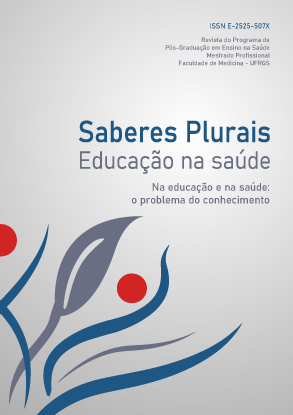KNOWLEDGE AND PERCEPTIONS OF PROFESSIONALS IN PRIMARY HEALTH CARE ON COMBINED HIV PREVENTION
DOI:
https://doi.org/10.54909/sp.v9i1.145958Keywords:
HIV, Primary Health Care, Education, ContinuingAbstract
Introduction: Human immunodeficiency virus (HIV) infection is a global public health problem. Combined Prevention (CP) aims to reduce new infections by combining different behavioral, structural and biomedical strategies, which need to be disseminated by healthcare professionals working in Primary Health Care (PHC). Objective: To assess the knowledge and perceptions of PHC professionals in Porto Alegre, Rio Grande do Sul, Brazil, regarding Combined HIV Prevention. Method: Descriptive cross-sectional study. The sample consisted of professionals working in PHC of Porto Alegre and was selected by convenience. Data were collected through a questionnaire on the Google Forms platform, with 16 closed-ended questions addressing CP and HIV, prevention methods, user guidance, and perceptions on the topic. A descriptive analysis of the data was performed, covering sociodemographic, professional training, and work-related variables. Results: A total of 145 professionals participated in the study (response rate of 4.1%), with a mean age of 34 years (SD=10.7). The majority were white (73.8%), cisgender heterosexual women (80.0%), had higher education (71%), and complementary training (77.2%). About 60% of the professionals had been working in PHC for five years or less, and 46.2% had outsourced employment contracts. Regarding knowledge of CP methods, most professionals reported having knowledge to provide guidance on condom use (90.3%) and regular testing for HIV and sexually transmitted infections (82.7%). About 50% of professionals reported having knowledge to provide guidance on pre-and post-exposure prophylaxis for HIV (PrEP and PEP, respectively), and 52.4% of professionals had attended a course or training on CP. Conclusion: The implementation of Combined HIV Prevention in PHC is essential to reduce virus transmission. It is recommended to develop actions to enhance the qualification of PHC professionals for prescribing prophylaxis (PrEP and PEP), including the training of multipliers.
Downloads
Downloads
Published
How to Cite
Issue
Section
License

This work is licensed under a Creative Commons Attribution-NonCommercial-ShareAlike 4.0 International License.
Autores que publicam nesta revista concordam com os seguintes termos:- Autores mantém os direitos autorais e concedem à revista o direito de primeira publicação, com o trabalho simultaneamente licenciado sob a Licença Creative Commons Attribution que permite o compartilhamento do trabalho com reconhecimento da autoria e publicação inicial nesta revista.
- Autores têm autorização para assumir contratos adicionais separadamente, para distribuição não-exclusiva da versão do trabalho publicada nesta revista (ex.: publicar em repositório institucional ou como capítulo de livro), com reconhecimento de autoria e publicação inicial nesta revista.
- Autores têm permissão e são estimulados a publicar e distribuir seu trabalho online (ex.: em repositórios institucionais ou na sua página pessoal) a qualquer ponto antes ou durante o processo editorial, já que isso pode gerar alterações produtivas, bem como aumentar o impacto e a citação do trabalho publicado (Veja O Efeito do Acesso Livre).










 Redes Sociais:
Redes Sociais: 


